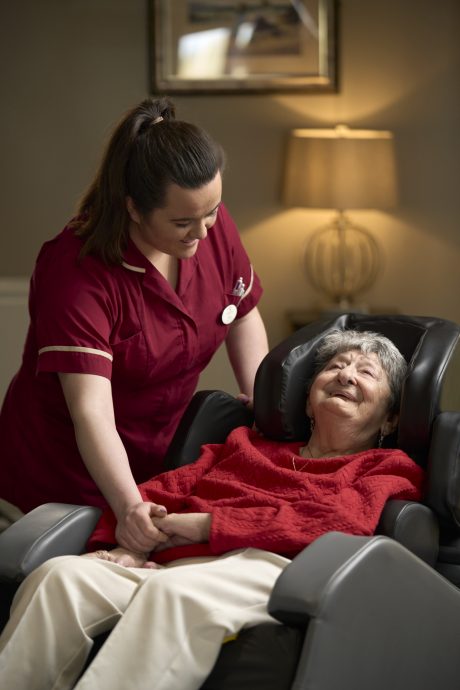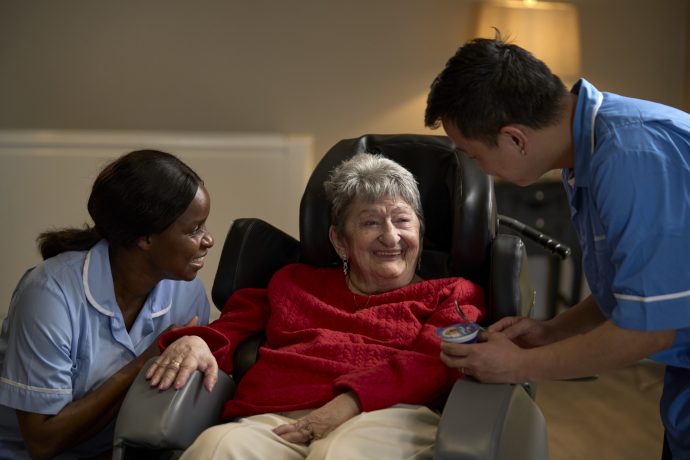
2nd September 2025
Empowering clinicians with expert-led training on clinical seating, pressure injury prevention, and best practice.
Learn More

Let our online product finder guide you through our simple steps to choose the chairs that best meet your patient’s needs.
Seating Solution FinderThe Envelo cushion provides excellent pressure redistribution and comes as standard on all Seating Matters chairs, meeting the clinical needs of most clients.
Explore Envelo RangeSeating Matters specialises in clinical, therapeutic seating solutions designed to improve patient care and safety, offering products for pressure injury prevention, postural support, and mobility assistance in healthcare settings.
Learn MoreDiscover how Seating Matters has transformed lives with our innovative seating solutions - read our inspiring customer success stories now!
Customer StoriesUsed in academia, in clinical practice and with caregivers around the world to guide their practices around specialist seating.
Download Free HandbookThe abbreviation for Light Reflectance Value is LRV. Value and intensity are frequently used interchangeably. Vibrantness or dullness refers to how clear or subdued a colour is. However, value only pertains to a colour's lightness or darkness.

LRV is measured on a range of 0% to 100%. The scale above illustrates this: 0% represents absolute darkness, and 100% represents a completely reflective white.
Colours having a greater LRV will reflect more light into a room, whereas darker colours below the midpoint of 50% will absorb more light from it.
Environmental design for people with dementia
It's critical to understand LRVs when designing care facilities, particularly for patients with dementia or those with visual impairments. When it comes to care home design, colour is crucial. Colour has an impact on a patient's attitude and sense of direction.
One of the most crucial things to consider when designing for people with contrast sensitivity is providing a clear, high level of contrast. The degree of contrast between surfaces—such as doors and furniture, walls and ceilings, etc.—is crucial in helping the blind understand the layout and possible path across a space.
Light Reflectance Values provide the most accurate contrast measurement. Every substance, paint, and cloth has an LRV indicated out of 100 points. A minimum of 30 points of difference in LRVs should exist between neighbouring surfaces, like walls and floors, in order for the standards to be met.
The Role of Seating in Dementia Care
Clinical seating plays a vital role in supporting environmental design. The adaptation of seating to mirror familiar domestic settings can have a calming effect, reducing confusion and disorientation frequently experienced by people with dementia. Colour choices which have contrasting LRV (light reflectance value) can help the person with visual difficulties distinguish between different surfaces, helping with better positioning in the chair and reducing levels of distress. Seating Matters can be consulted to recommend optimum colour options with contrasting LRVs or the floors and the walls to help the person with dementia navigate their environment safely and maximise their abilities.
For instance, if a patient's chair is placed on a dark floor, the cushions should be in a light colour, such as beige, with contrasting armrests in a colour such as a dune to ensure visibility. Seating Matters can provide recommendations for optimal colour choices with contrasting LRVs to enhance the safety and comfort of dementia patients.
We are here to help you have all the information you need to help you to get it right first time. Call us for advice and support or book a free Seating Assessment with team of expert Seating Specialists.


2nd September 2025

15th August 2025

15th August 2025